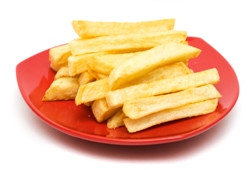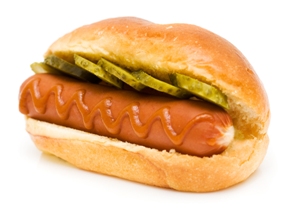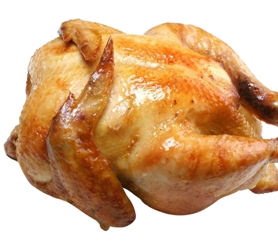
Fats are organic compounds that are made up of carbon, hydrogen, and oxygen. They are a source of energy in foods. Fats belong to a group of substances called lipids, and come in liquid or solid form. All fats are combinations of saturated and unsaturated fatty acids.
Fats consist of a wide group of compounds that are generally soluble in organic solvents and largely insoluble in water. Chemically, fats are generally triesters of glycerol and fatty acids. Fats may be either solid or liquid at room temperature, depending on their structure and composition. Although the words "oils", "fats", and "lipids" are all used to refer to fats, "oils" is usually used to refer to fats that are liquids at normal room temperature, while "fats" is usually used to refer to fats that are solids at normal room temperature. "Lipids" is used to refer to both liquid and solid fats, along with other related substances. The word "oil" is used for any substance that does not mix with water and has a greasy feel, such as petroleum (or crude oil) and heating oil, regardless of its chemical structure.
Function
Fats form a category of lipid, distinguished from other lipids by their chemical structure and physical properties. This category of molecules is important for many forms of life, serving both structural and metabolic functions. They are an important part of the diet of most heterotrophs (including humans). Fats or lipids are broken down in the body by enzymes called lipases produced in the pancreas.
Examples of edible animal fats are lard (pig fat), fish oil, and butter or ghee. They are obtained from fats in the milk, meat and under the skin of the animal. Examples of edible plant fats are peanut, soya bean, sunflower, sesame, coconut, olive, and vegetable oils. Margarine and vegetable shortening, which can be derived from the above oils, are used mainly for baking. These examples of fats can be categorized into saturated fats and unsaturated fats.
Fat is one of the 3 nutrients (along with protein and carbohydrates) that supply calories to the body. Fat provides 9 calories per gram, more than twice the number provided by carbohydrates or protein.
than twice the number provided by carbohydrates or protein.
Fat is essential for the proper functioning of the body. Fats provide essential fatty acids, which are not made by the body and must be obtained from food. The essential fatty acids are linoleic and linolenic acid. They are important for controlling inflammation, blood clotting, and brain development.
Fat serves as the storage substance for the body's extra calories. It fills the fat cells (adipose tissue) that help insulate the body. Fats are also an important energy source. When the body has used up the calories from carbohydrates, which occurs after the first 20 minutes of exercise, it begins to depend on the calories from fat. Healthy skin and hair are maintained by fat. Fat helps the body absorb and move the vitamins A, D, E, and K through the bloodstream.
Food Sources
SATURATED FATS
These are the biggest dietary cause of high LDL levels ("bad cholesterol"). When looking at a food label, pay very close attention to the percentage of saturated fat and avoid or limit any foods that are high. Saturated fat should be limited to 10% of calories. Saturated fats are found in animal products such as butter, cheese, whole milk, ice cream, cream, and fatty meats. They are also found in some vegetable oils -- coconut, palm, and palm kernel oils. (Note: Most other vegetable oils contain unsaturated fat and are healthy.)
UNSATURATED FATS
Fats that help to lower blood cholesterol if used in place of saturated fats. However, unsaturated fats have a lot of calories, so you still need to limit them. Most (but not all) liquid vegetable oils are unsaturated. (The exceptions include coconut, palm, and palm kernel oils.) There are two types of unsaturated fats:
Monounsaturated fats: Examples include olive and canola oils.
Polyunsaturated fats: Examples include fish, safflower, sunflower, corn, and soybean oils.
TRANS FATTY ACIDS
These fats form when vegetable oil hardens (a process called hydrogenation) and can raise LDL levels. They can also lower HDL levels ("good cholesterol"). Trans fatty acids are found in fried foods, commercial baked goods (donuts, cookies, crackers), processed foods, and margarines.
HYDROGENATED AND PARTIALLY HYDROGENATED FATS
This refers to oils that have become hardened (such as hard butter and margarine). Partially hydrogenated means the oils are only partly hardened. Foods made with hydrogenated oils should be avoided because they contain high levels of trans fatty acids, which are linked to heart disease. (Look at the ingredients in the food label.)
 In animals, adipose, or fatty tissue is the body's means of storing metabolic energy over extended periods of time. Depending on current physiological conditions, adipocytes store fat derived from the diet and liver metabolism or degrade stored fat to supply fatty acids and glycerol to the circulation. These metabolic activities are regulated by several hormones (i.e., insulin, glucagon and epinephrine). The location of the tissue determines its metabolic profile: "Visceral fat" is located within the abdominal wall (i.e., beneath the wall of abdominal muscle) whereas "subcutaneous fat" is located beneath the skin (and includes fat that is located in the abdominal area beneath the skin but above the abdominal muscle wall). Visceral fat was recently discovered to be a significant producer of signaling chemicals (ie, hormones), among which are several which are involved in inflammatory tissue responses. One of these is resistin which has been linked to obesity, insulin resistance, and Type 2 diabetes. This latter result is currently controversial, and there have been reputable studies supporting all sides on the issue.
In animals, adipose, or fatty tissue is the body's means of storing metabolic energy over extended periods of time. Depending on current physiological conditions, adipocytes store fat derived from the diet and liver metabolism or degrade stored fat to supply fatty acids and glycerol to the circulation. These metabolic activities are regulated by several hormones (i.e., insulin, glucagon and epinephrine). The location of the tissue determines its metabolic profile: "Visceral fat" is located within the abdominal wall (i.e., beneath the wall of abdominal muscle) whereas "subcutaneous fat" is located beneath the skin (and includes fat that is located in the abdominal area beneath the skin but above the abdominal muscle wall). Visceral fat was recently discovered to be a significant producer of signaling chemicals (ie, hormones), among which are several which are involved in inflammatory tissue responses. One of these is resistin which has been linked to obesity, insulin resistance, and Type 2 diabetes. This latter result is currently controversial, and there have been reputable studies supporting all sides on the issue.
Recommendations
Choose lean, protein-rich foods such as soy, fish, skinless chicken, very lean meat, and fat-free or 1% dairy products.
Eat foods that are naturally low in fat such as whole grains, fruits, and vegetables.
Get plenty of soluble fiber such as oats, bran, dry peas, beans, cereal, and rice.
Limit fried foods, processed foods, and commercially prepared baked goods (donuts, cookies, crackers).
Limit animal products such as egg yolks, cheeses, whole milk, cream, ice cream, and fatty meats (and large portions of meats).
Look at food labels, especially the level of saturated fat. Avoid or limit foods high in saturated fat.
Look on food labels for words like "hydrogenated" or "partially hydrogenated" -- these foods are loaded with bad fats and should be avoided.
Liquid vegetable oil, soft margarine, and trans fatty acid-free margarine are preferable to butter, stick margarine, or shortening.
Children under age 2 should NOT be on a fat-restricted diet because cholesterol and fat are thought to be important nutrients for brain development.
It is important to read the nutrition labels and be aware of the amount of different types of fat contained in food. If you are 20, ask your health care provider about checking your cholesterol levels.
care provider about checking your cholesterol levels.
Side Effects
Eating too much saturated fat is one of the major risk factors for heart disease. A diet high in saturated fat causes a soft, waxy substance called cholesterol to build up in the arteries. Too much fat also increases the risk of heart disease because of its high calorie content, which increases the chance of becoming obese (another risk factor for heart disease and some types of cancer).
A large intake of polyunsaturated fat may increase the risk for some types of cancer. Reducing daily fat intake is not a guarantee against developing cancer or heart disease, but it does help reduce the risk factors.
![]()
Disclaimer: This website is for information purposes only. By providing the information contained herein we are not diagnosing, treating, curing, mitigating, or preventing any type of disease or medical condition. Before beginning any type of natural, integrative or conventional treatment regime, it is advisible to seek the advice of a licensed healthcare professional.



























